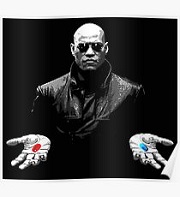(Total Views: 9139)
Posted On: 11/02/2019 11:43:08 AM
Post# of 156963
Yeah, containing with what misiu said and what I believe. So all in my opinion--which I guess needs reinforced saying with all the lawsuit happy comments lately. 
In a stem cell transplant, they kill the old cells with large doses of chemotherapy or radiation therapy, the transplant the new cells. The problem in the new donor immune system can attack the old cells even if a good match, gvhd, which can be deadly.
So they have only done this with humans that had life threatening blood cancer to begin with and might have died without this risky treatment.
Since they have hiv, they thought, why not transplant from a ccr5 delta-32 person. Kill the old cells, these new cells can't become infected, remember the virus is still present for a short while after even if the old infected cells have been removed.
The problem is they have tried this many times and only have been successful twice, because you must kill off every single infected hiv cell. You miss one cell, hiv comes back. So it has worked only twice.
The connection with the two people cured was they had very bad cases of gvhd, the new immune system killed off any missed infected cells that the chemo or radiation missed.
Dr. Sacha want to first replicate the cure in monkeys and second somehow separate the good part of gvhd that kills any remaining hiv reservoir with the deadly part. So first you need animal studies to replicate the cure, which you can improve the technique.
The problem is in monkeys there is not a good match for stem cell transplantation. Sacha’s team found a species of monkey called Mauritian cynomolgus macaques that can successfully receive stem cell transplants because I believe they were isolated on a island, which gave limited diversity.
Now the second problem is when you transplant, again the new cells can become infected with hiv still in the system for a while, and ccr5 delta 32 is only in humans. So they used leronlimab to imitate ccr5 delta 32. And none of the new cells became infected or they hiv would have returned. So leronlimab must have blocked 100% of hiv attacking the new cells.
They must use a donor without shiv so no new cells are infected. Any new cells infected and the cure would be doomed (before or after the transplant).
Now my question is how did they make sure all the old cells where killed? Did they irradiate all these cells before transplant or did they somehow control the gvhd after to make sure the old cell where removed, possibly controlling gvhd using leronlimab again for that.
This is step one I believe, get the cure working in animals. Step two is creating a safe procedure.
In a stem cell transplant, they kill the old cells with large doses of chemotherapy or radiation therapy, the transplant the new cells. The problem in the new donor immune system can attack the old cells even if a good match, gvhd, which can be deadly.
So they have only done this with humans that had life threatening blood cancer to begin with and might have died without this risky treatment.
Since they have hiv, they thought, why not transplant from a ccr5 delta-32 person. Kill the old cells, these new cells can't become infected, remember the virus is still present for a short while after even if the old infected cells have been removed.
The problem is they have tried this many times and only have been successful twice, because you must kill off every single infected hiv cell. You miss one cell, hiv comes back. So it has worked only twice.
The connection with the two people cured was they had very bad cases of gvhd, the new immune system killed off any missed infected cells that the chemo or radiation missed.
Dr. Sacha want to first replicate the cure in monkeys and second somehow separate the good part of gvhd that kills any remaining hiv reservoir with the deadly part. So first you need animal studies to replicate the cure, which you can improve the technique.
The problem is in monkeys there is not a good match for stem cell transplantation. Sacha’s team found a species of monkey called Mauritian cynomolgus macaques that can successfully receive stem cell transplants because I believe they were isolated on a island, which gave limited diversity.
Now the second problem is when you transplant, again the new cells can become infected with hiv still in the system for a while, and ccr5 delta 32 is only in humans. So they used leronlimab to imitate ccr5 delta 32. And none of the new cells became infected or they hiv would have returned. So leronlimab must have blocked 100% of hiv attacking the new cells.
They must use a donor without shiv so no new cells are infected. Any new cells infected and the cure would be doomed (before or after the transplant).
Now my question is how did they make sure all the old cells where killed? Did they irradiate all these cells before transplant or did they somehow control the gvhd after to make sure the old cell where removed, possibly controlling gvhd using leronlimab again for that.
This is step one I believe, get the cure working in animals. Step two is creating a safe procedure.

